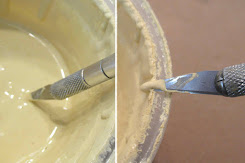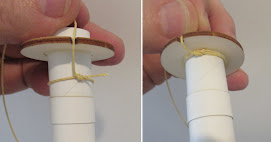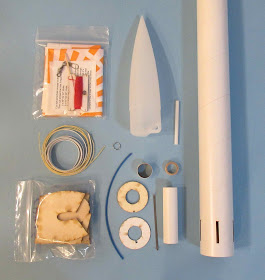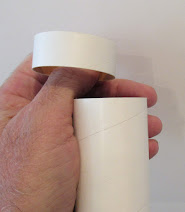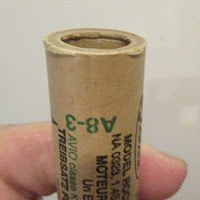Rick from New Way sent me a prototype for a upcoming kit.
The LETTER - GO is a robust BT-60 design, but with a custom fin design.
The fins spell out your name from left to right going around the tube!
The fins are laser cut plywood and thru the wall.
.
The kit should be available after this summer's NARAM. The kit doesn't include the shorter fin attachment tube and letter fins. You send back the coupon with your name request and your custom letter fins are returned to you. Your name could have three, up to six letters. The number of fin slots will be custom cut to fit the length of your name.
This could be a great personalized Christmas or Birthday gift for a rocket flying family member.
Here's the specs.
It's almost the size of a Big Bertha. It might be upgraded to a 24mm mount As the fin root edges don't reach the motor mount tube.
All the parts:
A multi-sized (12, 18 and 24") parachute.
Kevlar (with a blue shrink wrap tube for ejection charge durability)
The engine mount as a cardstock lower centering ring and a plywood upper ring. This gives extra strength for the Kevlar line looped beneath the upper plywood ring.
Parts of interest:
Water slide name decal with vinyl trim strips
Small metal chute ring for chute attachment
Engine hook retainer ring
That blue shrink wrap tube that goes over the Kevlar line
Two of the letter fins spelling out my name
The New Way sanding and Q-tip build bag.





